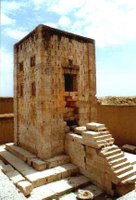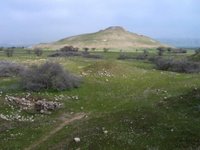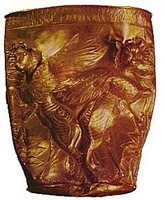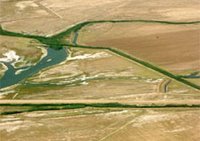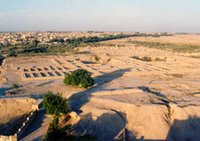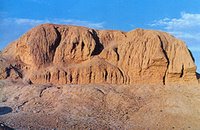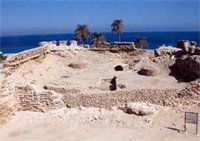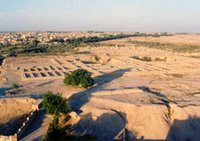For the First Time, a Sasanian Imperial Cemetery Discovered at Gur
“We were cleaning an early post-Sasanian era water well for study of historic strata. Surprisingly, we found some drawings on the walls of the well at a depth of 180 centimeters. We made large trenches in order to trace the (course of the) drawings to the floor, and consequently we discovered the cemetery and the coffins,” team director Leili Niakan said.
The U-shaped coffins are empty, but the cemetery floor has many colorful drawings depicting Sasanian princes, though they have been partially damaged over the years, she explained. Such a cemetery and such coffins have never been seen at any site before, she said.
“We found pieces of bone in the well, but it is difficult for us to study the bones due to the damage caused by the humidity of the well, so we plan to send the bones to an Iranian expert at Cambridge University for further study,” Niakan added.
In early January, the team unearthed bas-reliefs depicting four members of the Sasanian Imperial family in the Menarshahr region of Gur.
Located 10 kilometers from Firuzabad in Fars Province, the circle-shaped city of Gur was the first capital of the Sasanians, which was established during the reign of the founder of the Sasanian dynasty, King of Kings Ardashir I. Very few studies have been carried out on the site, which is one of the five most important Sasanian cities. It covers an area of 300 hectares.
The excavations are being carried out in order to save the site, which is threatened by farmers who are cultivating the lands beneath which most of the ancient city lies buried.
Over 30 percent of the upper level of the city has been flattened and its walls have been seriously damaged by farmers’ activities over the years.

